Tags: ecology
Rare Grasshopper Sparrow Discovered at Freshkills Park
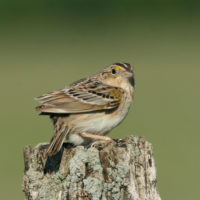
Most visitors to Freshkills Park usually get excited when they see the ospreys in their nest, or a bald eagle fly by, or a red-tailed hawk overhead… but scientists and bird enthusiasts are most excited about all of the grasslands within the park.
...MOREFarther Afield: A visit to the Black Rock Forest Consortium
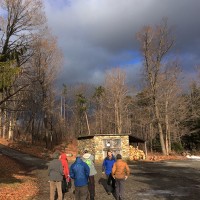
In mid-December, the Freshkills Park Development Team took a trip to visit the Black Rock Forest Consortium in Cornwall, NY. The Consortium manages 3,838 acres of forest with a scientific research field station on site. The team met with Dr. Bill Schuster, Black Rock’s Executive Director, who gave an overview of the facilities at the station and the research and scientific programming taking place, and led the team on a tour into the forest to visit some of the current research sites towards fostering ideas for the future of the scientific research program at Freshkills Park.
...MOREGowanus Canal Cleanup
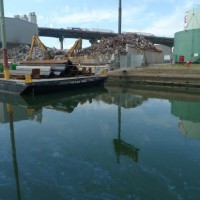
The Environmental Protection Agency has finalized its cleanup plan for Gowanus Canal. The Brooklyn Canal, bound by Park Slope, Cobble Hill, Carroll Gardens and Red Hook, was declared a Superfund site in 2010 and communities have long been pushing for its cleanup.
...MOREBird Breeding at Freshkills
Last week several members of the Freshkills team assisted Dr. Mark Hauber, a professor of Psychology at Hunter College, in checking bird nestboxes in the park. Dr. Hauber is gathering data on the bird populations and breeding success at Freshkills Park, a site which has acted as a stopover for bird species along the Atlantic Migratory Flyway since the closure of the landfill.
...MORELondon’s Olympic Park features ecologically-based design approach
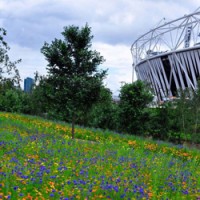
Though the 2012 Olympic Games have come to a close, the landscape of London’s East End has been dramatically transformed for the long-term utilizing a ecologically-based design approach that has much in common with the Freshkills Park master plan.
According to The Dirt, nearly 250 acres of formerly-industrial land were turned into a beautiful setting for the Olympic venues inspired by Victorian and post-war English pleasure and festival gardens.
...MOREThe Undeniable Benefits of Urban Trees
It is inarguable that trees are an integral component of a healthy life. Despite this fact, the case for trees in urban environments needs to be continually proven in order to prevent their elimination. As Atlantic Cities reports, the City of San Diego is setting an excellent precedent by collecting data which demonstrates the overwhelmingly positive mental and physical effects of trees on densely populated environments.
...MORE‘Mussel Raft’ aides water filtration
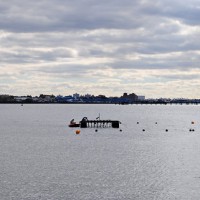
An interesting experiment in water pollution management is taking place in the Bronx River estuary near Hunts Point in New York City. Scientists are testing the use of a ‘Mussel Raft’ for addressing nitrogen pollution from treated sewage that ends up in the water from a nearby treatment facility.
...MORENew smartphone app tracks invasive plant species
Recently, UK scientists and environmental organizations teamed up to create a smartphone app that allows users to track invasive plant species. PlantTracker “tells people how to spot invasive plants and lets them snap geo-tagged pictures of the species and submit them to the organizations to better help them manage the populations.”
...MOREThreatened coastal seagrasses supply more carbon storage than forests
New research shows coastal seagrass store up to twice the amount of carbon as above-ground forests, but are being threatened by dredging and water pollution, among other factors. Treehugger reports on the global analysis by Nature Geoscience showing seagrass can store “83,000 metric tons of carbon per square kilometer, versus 30,000 tons for a typical forest” and “29% of all historic seagrass meadows have been destroyed, primarily due to dredging and water pollution, with 1.5% of seagrass meadows destroyed each year.”
...MORECity outlines strategy to protect and create wetlands
Mayor Bloomberg and several City of New York agencies recently released The Wetland Strategy report, which outlines plans to protect and improve city waterways. The report contains strategies to address goals in PlaNYC 2030. Among the 12 initiatives are plans to:
- invest $48 million in projects that restore and enhance nearly 127 acres of wetlands and neighboring areas,
- add 75 acres of wetland to the New York City Parks system,
- create the natural areas conservancy to encourage a public-private partnership for wetlands management,
- create a wetlands mitigation banking or in-lieu fee mechanism for public projects.
NYC Wildflower Week: Tour the Greenbelt Native Plant Center, Monday May 14
Starting this weekend, NYC Wildflower Week presents a terrific series of events focused on New York’s open space and rich native plant communities. To celebrate, our partners at the Greenbelt Native Plant Center on Staten Island are welcoming the public next Monday, May 14, on a tour of their facilities.
...MOREEel populations return to Staten Island
Eel populations are making a comeback in the metropolitan region and along the eastern seaboard. After years of rehabilitation of the area’s waterways, eel populations are showing signs of a resurgence in Staten Island.
Joining the work of the American Eel Research Project, the New York City Department of Environmental Protection has set up a testing site in Staten Island’s Richmond Creek, one of the improved waterways.
...MOREBioswales and green infrastructure for New York
The future of green infrastructure within the New York metropolitan region just got brighter: NY State and City officials announced this week that over $2 billion in public and private investments would be committed to ecologically-sound techniques for the management of stormwater runoff and sewage overflow.
...MOREA century of wetland restoration efforts
A recent analysis of wetland restoration efforts sheds new light on the success of a 100-year history of such work to reclaim these highly important ecosystems. Restoration has been a major undertaking in recent decades as development has damaged and otherwise claimed over half of the wetlands in areas like North America, Europe, Australia, and China.
Progress at Brookfield, Staten Island’s other landfill
Progress continues at Staten Island’s Brookfield Avenue Landfill, a 132-acre site in the Great Kills neighborhood, just east of the Freshkills Park site. The second phase of construction is under way and should be complete by 2013. As with other landfill remediation projects in New York City, the city Department of Environmental Protection (DEP) will oversee completion of the cap, barrier walls and leachate collection system.
...MOREIsland landfill a triumph, but also a possible risk
The New York Times reports on Pulau Semakau, the island that serves as Singapore’s only landfill–and one of its premier eco-tourism destinations. Solid waste is incinerated on mainland Singapore and sent to the island via covered barges. The ash is then transferred by truck into an active “cell,” which has been sectioned off and emptied of sea water.
...MORENew York, new bees
Four new species of bees have been identified in New York State. Among them is Lasioglossum gotham, discovered at the Brooklyn Botanical Garden, as small as a grain of rice. It burrows its home underground. The species was distinguished from other tiny look-alikes through DNA bar coding and digital imaging.
...MOREParks Department’s Johnny Appleseed profiled
The New York Times profiles Ed Toth, Director of the NYC Department of Parks & Recreation’s Greenbelt Native Plant Center (GNPC), a greenhouse and nursery operation that provides seed and plant material for restoration projects across the city’s 1,700 parks.
...MORETour Freshkills Park with an expert this Sunday
Over the course of the various stages of its history, a wide range of professionals have spent time working on or thinking about the Freshkills Park site: sanitation workers, engineers, equipment manufacturers, scientists, policymakers, architects, designers, artists, philanthropists. There are countless layers of expertise to mine in understanding the site.
...MORENew sewage overflow protections for Jamaica Bay
The NYC Department of Environmental Protection has announced a $400 million upgrade to the 26th Ward Water Pollution Control Plant (WPCP) in Brooklyn that will reduce the amount of untreated sewage overflow entering Jamaica Bay during storm events by 1.2 billion gallons a year.
...MORE



